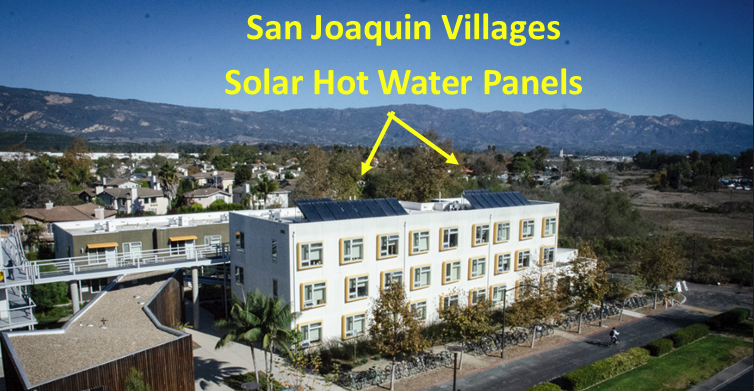Making the Future Bright with Solar Power

Solar Energy at Work in HDAE
Solar energy is used extensively at UCSB in all three forms: photoelectric panels (PV) which produce electricity, solar thermal panels which produce hot water, and solar pool systems which heat pools. PV panels are the most prevalent and are above the parking structures, parking lots and on roof tops. The largest is shown below in Lot 38. This produces enough electricity for approximately 400 homes (1,931 kW).

Solar panels heat hot water for showers and faucets at San Joaquin Villages shown below. These produce 100% of the hot water in the summer and up to 50% in the winter.


Housing has used the sun to heat three of its pools for decades. The system at the right is the Santa Catalina solar pool system. These systems run year-round and reduce the need for heating with natural gas.
Portola Dining Commons uses solar panels to preheat the hot water it uses to make thousands of meals per year. This is called solar thermal energy. 
The photo below shows multiple uses of solar energy in HDAE. Starting on the left, Sierra Madre Villages utilize solar thermal energy for hot water (showers and faucets). The middle arrow points to solar electricity being generated above parking lot 65, and on the right are the hot water panels on top of Tenaya Towers at San Joaquin Villages. Not seen are the 42 kW solar electric panels at the Miramar Center in Sierra Madre Villages. This is the equivalent to about ten homes worth of electricity. 
As you can see, solar energy is common at UCSB and growing. We plan to add more PV panels to older buildings in the coming years. Solar is a great way to get carbon-free energy from the sun. This reduces the burning of fossil fuels which contributes to climate change while saving students money over time. Acquiring solar energy has been a win-win scenario that HDAE has been employing since the 1980s when the first solar thermal panels were installed. We look forward to keeping the tradition growing.